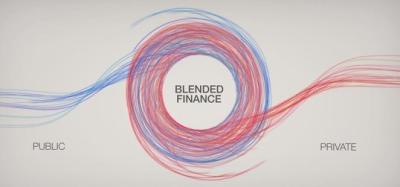SOLEP Conference "Evaluation of blended finance: Challenges and possible ways forward"
Blended finance, aiming to strengthen sustainable economic development, is becoming increasingly widespread in and outside the EU. As a result, there is also increasing scrutiny towards blended finance activities and financial instruments, which are sometimes challenged for their lack of transparency and demonstrable impacts. This SOLEP event, hosted by PwC's Public Sector Advisory practice, aimed to raise awareness of the main challenges around the evaluation of blended finance and financial instruments and of the lessons learned about the methodologies applied in existing evaluations.
Evaluation of blended finance – a complex process
The seminar highlighted some of the particular challenges characterising blended finance evaluation. At the management and organisational levels, the fact that blended finance involves a plurality of (sometimes interlinked) actors, with different mandates, interests and constraints, makes the evaluation process complex.
In addition, the lack of harmonisation in monitoring tools often hampers comparability between evaluations. At the evaluation, impact and additionality levels, the lack of common definition (of e.g. financial development and value-additionality) and the difficulty of establishing causality also contribute to making the evaluation challenging.
These challenges affect the practice and use of blended finance evaluations . There is a lot of variance in the approaches used so far and most of them tend to focus on internal accountability rather than learning. Furthermore, Evaluation rarely include indirect effects and/or reflect the time lag between implementation and results.
A difficult trade-off between what is desirable and what is feasible
The participants discussed several practical issues revolving around the questions of how to assess ex-post the impacts of blended finance project and/or programmes without a proper ex-ante impact assessment, how to define development additionality, and how to establish causal links in an environment of multiple parallel interventions contributing to the same objectives.
In the face of these challenges, participants came to the conclusions that there is a need to strike a trade-off between what is desirable, and what is actually feasible, while taking into account the interests and constraints of the actors involved in blended finance. This points to the need for evaluators to be flexible, creative and pragmatic in their approach of blended finance evaluations.
---
Consult speakers' presentations:
- "Blended finance evaluation. Governance and methodological challenges", by Irene Basile, OECD, Policy Analyst, Development Co-operation Directorate
- "Experience with the WBIF and WB EDIF blending instruments for the Western Balkans: some thoughts", by Massimo Cingolani, European Investment Bank, Head of Unit, Blending EU/Accession countries
- "Case study: SPTF - CERISE, inclusive finance / Microfinance", by Jürgen Hammer, Social Performance Task Force Europe, Managing Director

